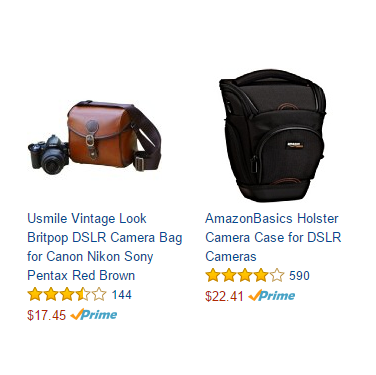15 Questions to Know to Increase Amazon Sales in Q4

The holiday shopping season presents the biggest sales opportunity of the year for the vast majority of Amazon sellers. During these next several months, defining an aggressive strategy and the flawless execution of that approach are critical to maximizing bottom line revenue for the year’s busy season.
Pat Petriello, Head of Marketplace Strategy at CPC Strategy & Paul Johnson, Co-Founder of SellerLabs teamed up for last week’s webinar to discuss the best practices for being more aggressive on top-performing ASINs while maintaining profitability during this Q4.
There were a lot of questions we didn’t get a chance to answer – so here they are now with answers from Petriello and Johnson
A. If your manual campaign, that’s already up and running is doing well – there is no reason to pause it. However, in addition to that it would definitely benefit you to also launch an automatic campaign strategy. There’s a pretty good chance there are keyword opportunities you are missing out on because you are not harvesting that data from Amazon through Manual Campaigns.
A. Selection bias is probably the number one most common inefficiency. Often, sellers have products in mind that they want to do well or that they believe will do well – so those are the products that they will advertise or bid higher on or put in multiple ad groups regardless of the performance. One of things I would recommend is to be product agnostic. I can almost guarantee that no seller has a product catalog where, 100 percent of their products are going to be winners or 100 percent are going to be losers. You don’t have to make it a guessing game. Use the data that Amazon provides to make those strategic decisions.
A. Absolutely. For example, if your bidding .50 in your automatic campaign and a competitor is bidding .75, and then you are bidding $1 in our manual campaign – the bid is NOT going to be $1. The bid is only going to be .76 just to beat out the competition. So, you are not going to drive the price up on yourself.
A. Bid & sales history are a huge driver for where these ads show up. Amazon is going to surface the products that are most likely to be converted or have been purchased in the past.

Think of these buckets as momentum. As soon as that product starts to sell more – it will surface higher. As it surfaces higher, shoppers will find your products easier and of course, it will sell more.
A. Sellers should start with at least 25 to 40 keywords. The reason is because you want to start with a large number of keywords but not so large as to the point of excessive (500+). You don’t want your spend to run out of control. Odds are – if you are using 500 keywords for an ad group – many of those terms are going to be inefficient. Your products are not going to surface for them anyway – because your product is not going to be relevant. You also don’t want too few keywords because you are not going to generate enough volume. We’re found in our experience, 25 to 40 works best starting out.
A. Amazon takes a lot of things into consideration when running your Sponsored Product ads. Even though the specific keyword may be relevant to your product, they are also looking at sales history, velocity, reviews, etc. They want the user to have the best experience that they can provide. Also, impressions are not a very actionable data source. Amazon counts impressions even if the ad shows up on the 30th page of results.
A. It’s important to understand that CPCs are going to rise. You should be thinking in advance about what products you have with very thin margins that might not be profitable to advertise this Q4. I would recommend an evaluation of your inventory to make sure your are not selling these types of products at a loss.
A. You should look at your advertising cost of sale. You should analyze which keywords that are driving clicks – but not converting, those are the inefficient ones. Know what your cost of sale goals are, know what that acceptable threshold is, and use that as the benchmark for when you should start making decisions.
A: Absolutely, 100 percent. But it is not immediate, it is a virtuous circle.
A. Absolutely. Sponsored Products plays a key role in new product launches because you can gather incremental sessions for those products which helps them rise up in the organic SERP. You might want to create a separate ad group just for that product – so you can see what data comes back and analyze which keywords to attribute it’s success to. Product reviews and content optimization are also going to be a big driver for the success of the new product.
A. This refers to a SKU or set of SKUs that are driving a disproportionately high percent of sales / revenue within your catalog.
 Q. When considering a price increase – do you recommend raising the price all at once or in small increments?
Q. When considering a price increase – do you recommend raising the price all at once or in small increments?A. Raise your price to what you think is legitimate – and see what happens (few hours or few days). You should collect data based on that sales increase – if you’re happy with it and you are still gaining favorable sales velocity – keep the price increase. If you’re not happy with the data and your sales are plummeting then at least you only lost a day or two of sales. No risk – no reward. You are only going to know if you test different pricing methods.
A. Merchant words is a good tool to use for understanding keywords. You want to pick the keywords that have the most search volume and matter the most. I also recommend running ads in Amazon Sponsored Product Ads and looking at the data that Amazon provides.
A. To be featured as one of Amazon’s Best New Sellers you are going to have to generate a lot of sales in a short period of time. Snagshout & Amazon Sponsored Products are both powerful ways to increase product reviews. I’d also recommend Lightning Deals – if you can gain access.
39 Questions From Our Amazon Sponsored Products Webinar- Answered
19 Questions From Our Amazon Sponsored Products Strategy & Analysis – Answered
